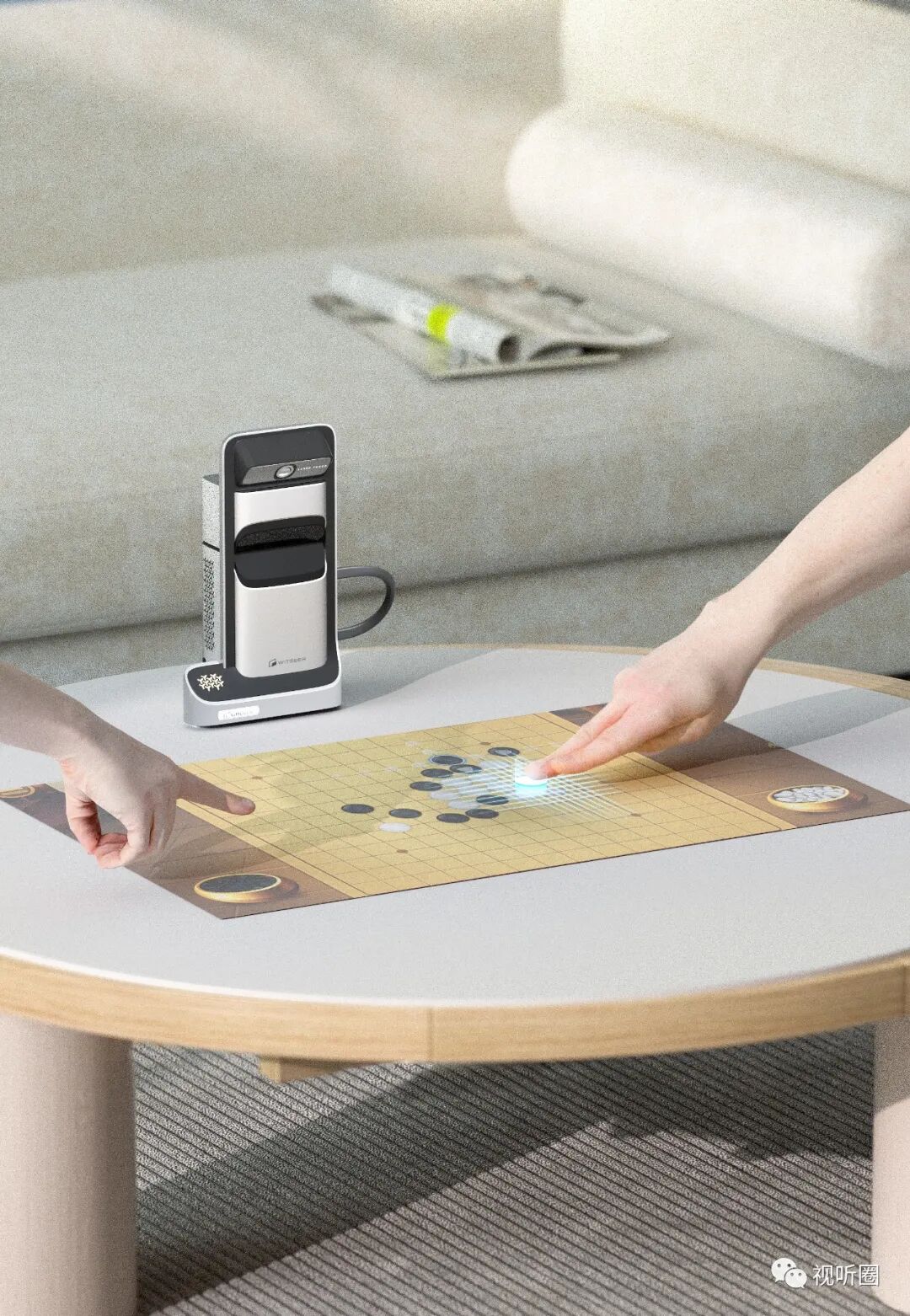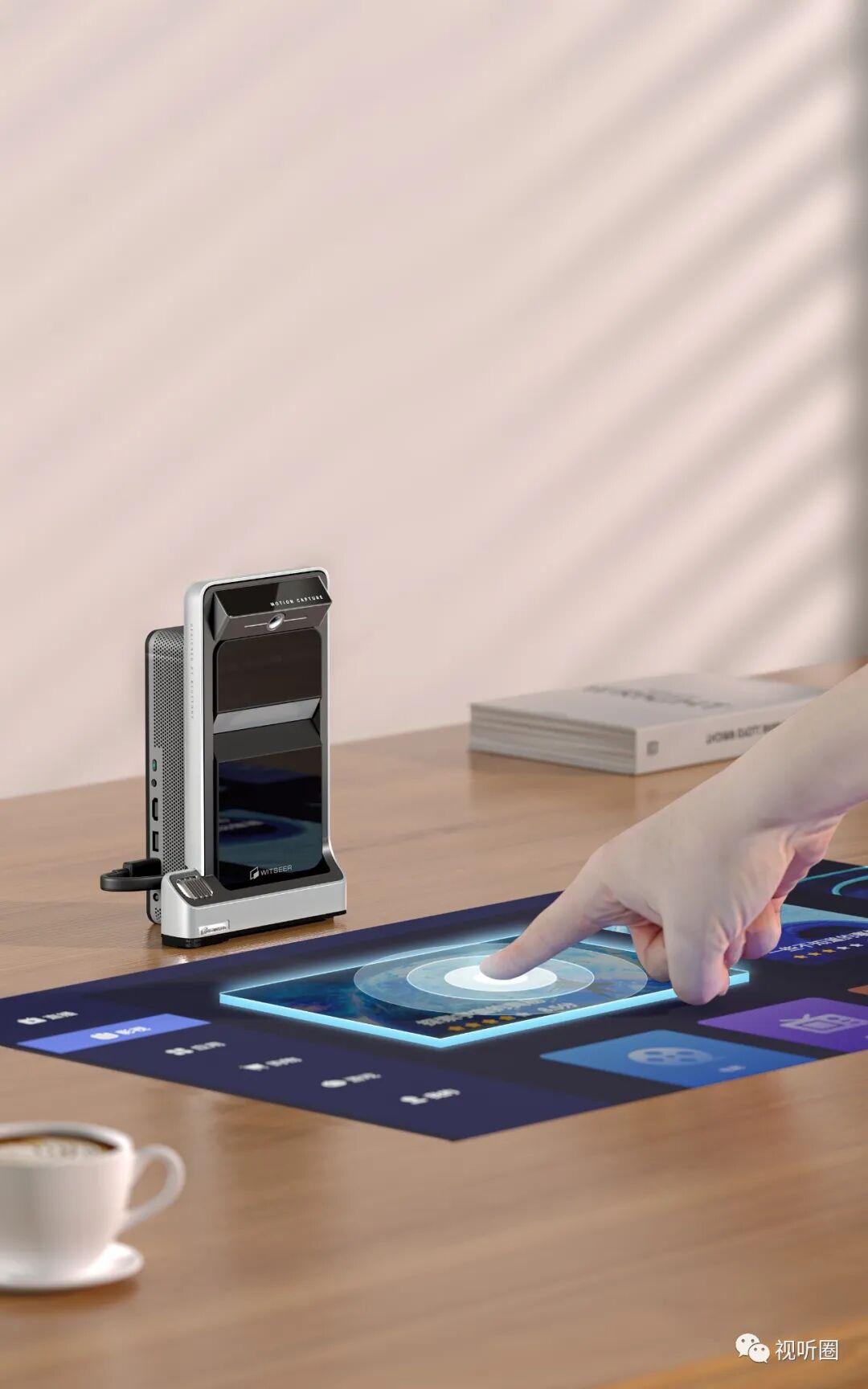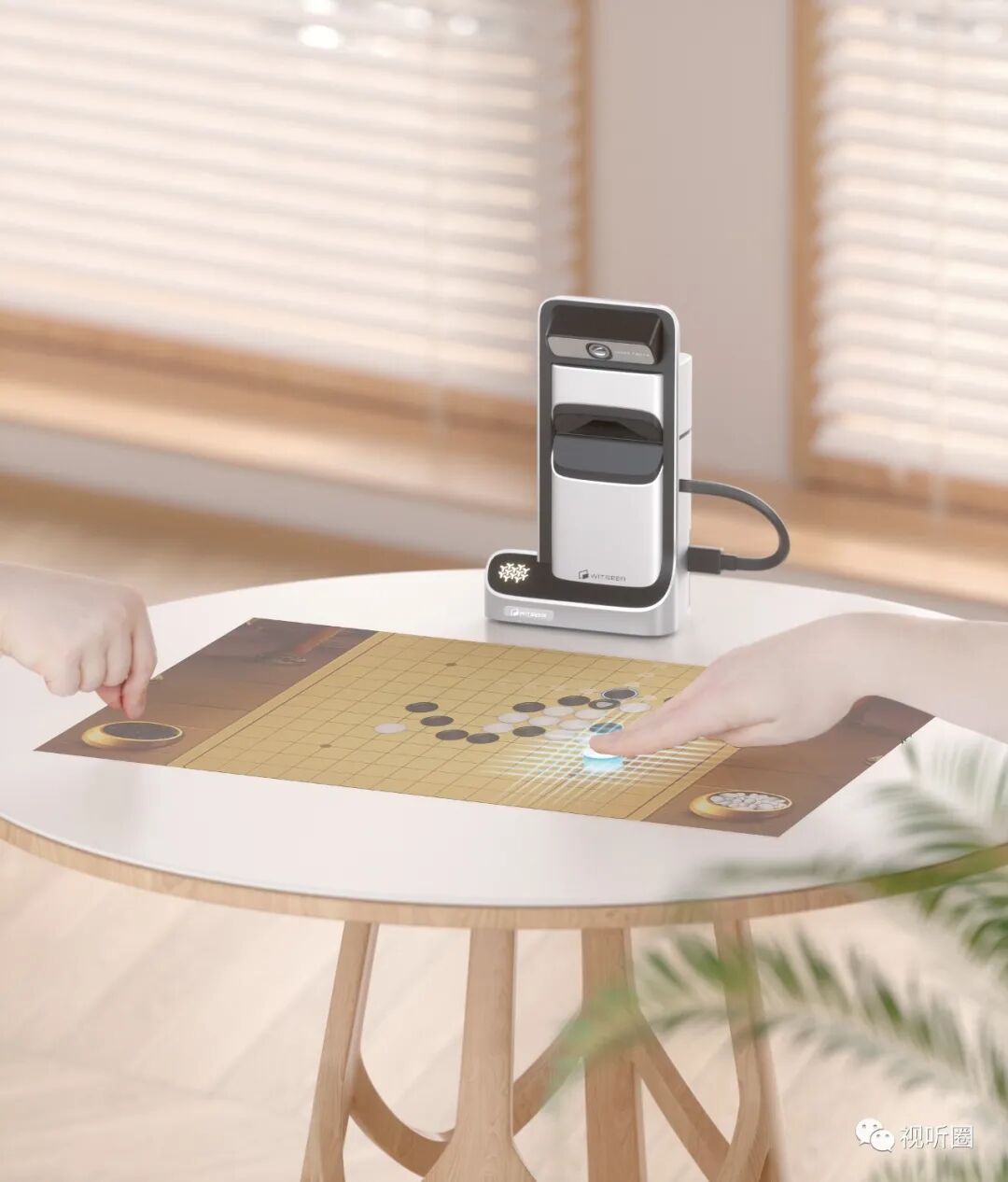In recent years, large-screen projector products have rapidly entered the homes of ordinary people. But have you ever thought about whether a “large screen can become a touchscreen”?
In December 2022, the well-known domestic ultra-short throw projector brand Huishi launched a value-added accessory called “Hui Diandian” for its ultra-short throw projectors. With the Hui Diandian product, Huishi’s Bao Bao Tou M1 and Peng Peng Tou P9 can instantly transform into a magical new tool that is “interactive and manipulable” like something out of a sci-fi movie.

Ultra-short throw technology upgraded, Hui Diandian breaks application ceilings
The international research organization IDC released its Q2 2022 tracking report on the Chinese projector market, which showed that in the first half of 2022, the shipment volume of home projectors in China reached 1.935 million units, a year-on-year increase of 15.4%; sales exceeded 6.4 billion yuan, a year-on-year increase of 12.9%. — Projectors have become a “typical” choice for differentiated applications such as home 100-inch screens, portable large screens, and outdoor screens.
Especially since 2021, when companies represented by Huishi launched a new generation of smart projectors centered on “standard ultra-short throw” technology, the convenience of large screens brought by ultra-short throw has once again stretched the boundaries of projector applications in small spaces. Products like Bao Bao Tou M1, Peng Peng Tou P9, and Huishi H3 have brought a comprehensive upgrade to the application of large-screen projectors.

Among them, Bao Bao Tou M1 is characterized by its compactness and mobility, creating a portable large screen; Peng Peng Tou P9 adopts the first modular design in the history of projectors, offering multiple functional combinations; Huishi H3 has broken the threshold for LED smart projection applications, redefining the performance ceiling of LED smart projectors with its “super capabilities”.
However, the newly launched “Hui Diandian” is not a projector product — it is a modular “projector accessory”. By integrating with M1, P9, and a series of future ultra-short throw products from Huishi, it provides these projectors with “interactive” and “touch” functionalities. In this regard, Liang Hua from Huishi pointed out, “Ultra-short throw technology is the first step for Huishi to open the door to upgrading the smart projector market, while value-added accessories like Hui Diandian will be the second step in expanding the ‘functional value’ of projectors on a larger scale — the combination of ultra-short throw and touchscreen operation will inevitably lead to a new development direction for home viewing products in the future.” At the same time, the unique modular design also preserves consumers’ autonomy and application flexibility.
Value-added competition in the projector market, Huishi once again leads the way
Equipping ultra-short throw projectors with “touchscreen” accessory modules will undoubtedly advance Huishi’s projector products further along the path of differentiation and value addition.
Industry observers point out that consumer demand for smart projectors in China is progressing from “solving the existence” to “solving usability”, and then continuously advancing into the era of “value-added innovation”. The future competition in the smart projector market will not be won merely by “satisfying the large screen”. Whoever can first capture “more added value on a large screen” will become the winner of the future.
In this regard, Huishi clearly has more depth and insight. On one hand, Huishi is backed by Jinghua Optoelectronics, which boasts nearly 30 years of profound experience in the optical industry. Jinghua Optoelectronics’ industry encompasses the research, design, and manufacturing of micro-projection optical engines, as well as complete machine design and manufacturing, possessing a complete optical industry chain. It is reported that from 2009 to 2021, Huishi’s parent company, as a veteran optical machine manufacturer, provided core optical engine projection products for most mainstream smart projector brands in China, with a cumulative shipment of nearly 7 million units.
The depth behind Huishi is not only advanced manufacturing capabilities and strong R&D capabilities but also a wealth of big data accumulated throughout the industry’s development process. By analyzing projector technology, optical engine technology, and market demand trends, Huishi can “stay ahead of demand and layout advanced supply”. Especially with new products like Hui Diandian, Huishi has interviewed over 1,000 consumers, attentively listening to user feedback, and through the specific combination of “supply experience” and “demand practice”, has keenly grasped the incremental value points of the industry such as ultra-short throw projection, modular design, “super capabilities” upgrades, and “touchscreen” functionality.
On the Hui Diandian product, Huishi proposed a new idea for achieving “touchscreen” functionality through “modular addition” by studying the current state of the large-screen interaction market, mainstream products, and technical experiences, as well as analyzing the uniqueness of home and personal projection products. This allows the Hui Diandian product to “benefit more projector models” without requiring consumers who do not need this functionality to purchase additional features.

At the same time, Huishi’s market research has also summarized a common issue with “touchscreen projection” applications: the currently available touchscreen projectors on the market have room for improvement in both ease of operation and accuracy of recognition. The main reasons for these issues lie in the insufficient precision provided by traditional LED infrared light source scattering illumination; at the same time, some manufacturers lack “hard work” in their “recognition algorithms”: Huishi’s Hui Diandian product adopts a new generation of laser scattering signal illumination technology, utilizing the high precision of lasers to achieve high reliability and high resolution of touchscreen recognition signals, combined with a new generation of recognition algorithms developed by Huishi’s algorithm team over two years, enabling more accurate and swift capture of user touchscreen actions, delivering a “smooth and fluid” interactive experience.
For a company to grow, it must continuously discover user pain points and break through technical barriers through R&D: Liang Hua further pointed out that Huishi’s products focus on the continuous upgrade of scene experiences, “We hope to convey to users not only a portable and smart home life but also the accompanying comfort and fluidity of the user experience” — “What I have, others do not; what others have, I do better” is the core competitive strategy that Huishi adheres to.
Projectors Create New Value, Hui Diandian Sets an Example for Incremental Innovation
What different functions will Bao Bao Tou P9 or P9 PRO, and Bao Bao Tou M1 have with Hui Diandian? To describe it, using “dimensional elevation” is most appropriate!
For example, the projector image can become a “baby’s doodle wall” thanks to Hui Diandian. Many parents may have this worry: their baby likes to draw on the walls, which can dirty the clean walls. By using the projected image as a canvas, projecting onto walls, tables, bed sheets, and sofas, and using the Hui Diandian touchscreen as an interactive tool and brush to render and doodle, there is no need to worry about any cleaning issues.
Additionally, Hui Diandian can also become a “meeting tool”. Products like Bao Bao Tou serve as marketing large screens that are easy to carry. However, when explaining to viewers, how can one conveniently sketch, annotate, or modify on a PPT? At this moment, Hui Diandian becomes a great helper, instantly turning the projection screen into an “interactive whiteboard”. Business communication and educational learning become more convenient, aligning more with traditional paper communication processes while also possessing the advantages of electronic document communication.
Of course, as a projection application artifact, Hui Diandian also serves as a gaming assistant, a bridge for parent-child interaction, transforming into a “what you see is what you get” remote control, an outdoor karaoke station for adventurers, an online interactive helper for home learning, and an electronic blackboard for teachers’ online classes… In short, this is a value-added tool for projectors suitable for all ages and applicable for both work and entertainment: it transforms the projection large screen from “flat appreciation” to “three-dimensional perception”, further evolving the value and application methods of smart projection products.

Industry insiders point out that Hui Diandian is another key “scene language practice” in Huishi’s innovation process for ultra-short throw projection. By introducing interactive elements, the large projection screen will inevitably be explored for more new uses, attracting more consumer attention and providing added value to consumers who already own projector products. This strategy of modular addition to create value will undoubtedly elevate Huishi’s projector product innovation to a higher dimension, injecting more positive energy into breaking the growth ceiling of the projector industry and opening up new growth tracks.